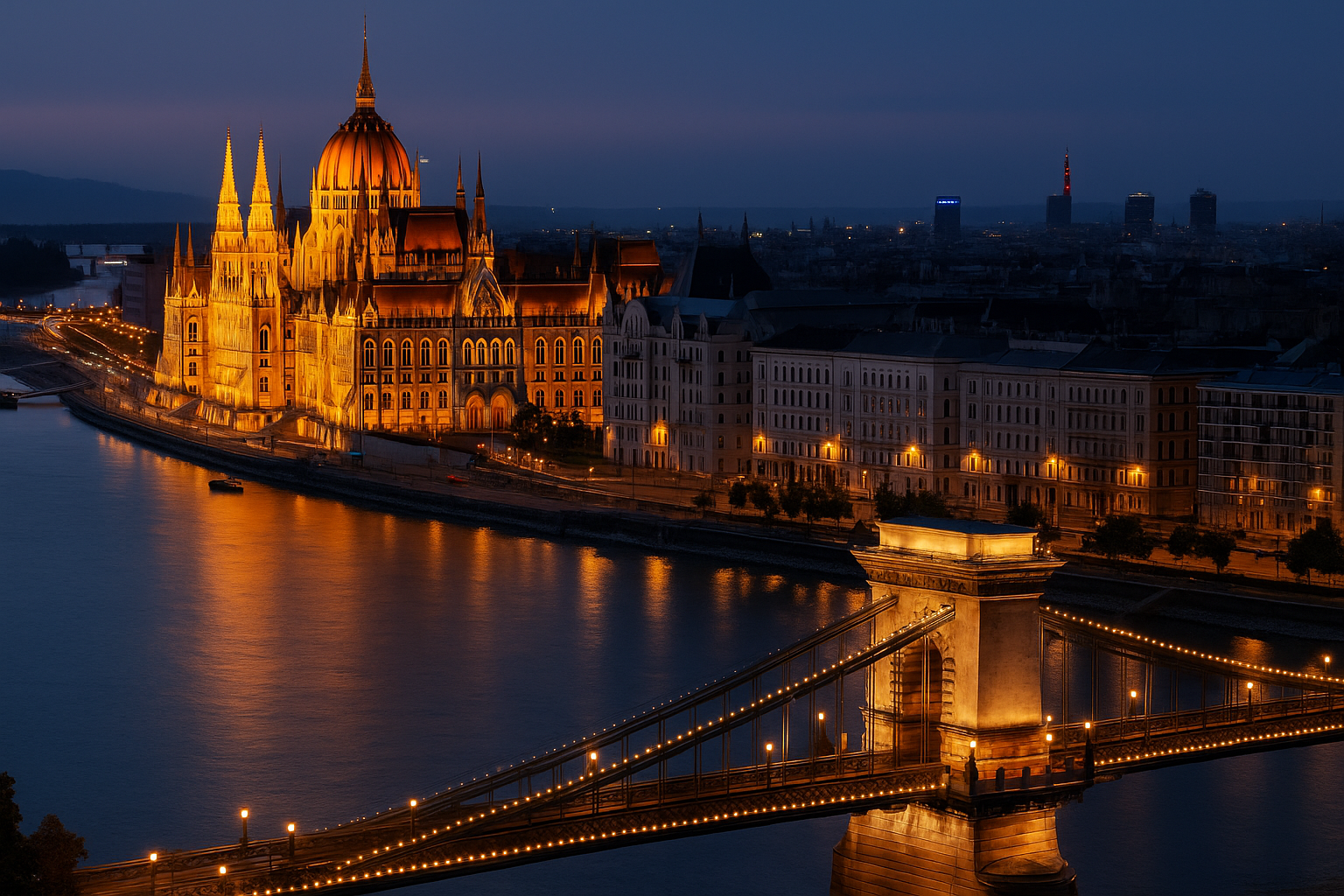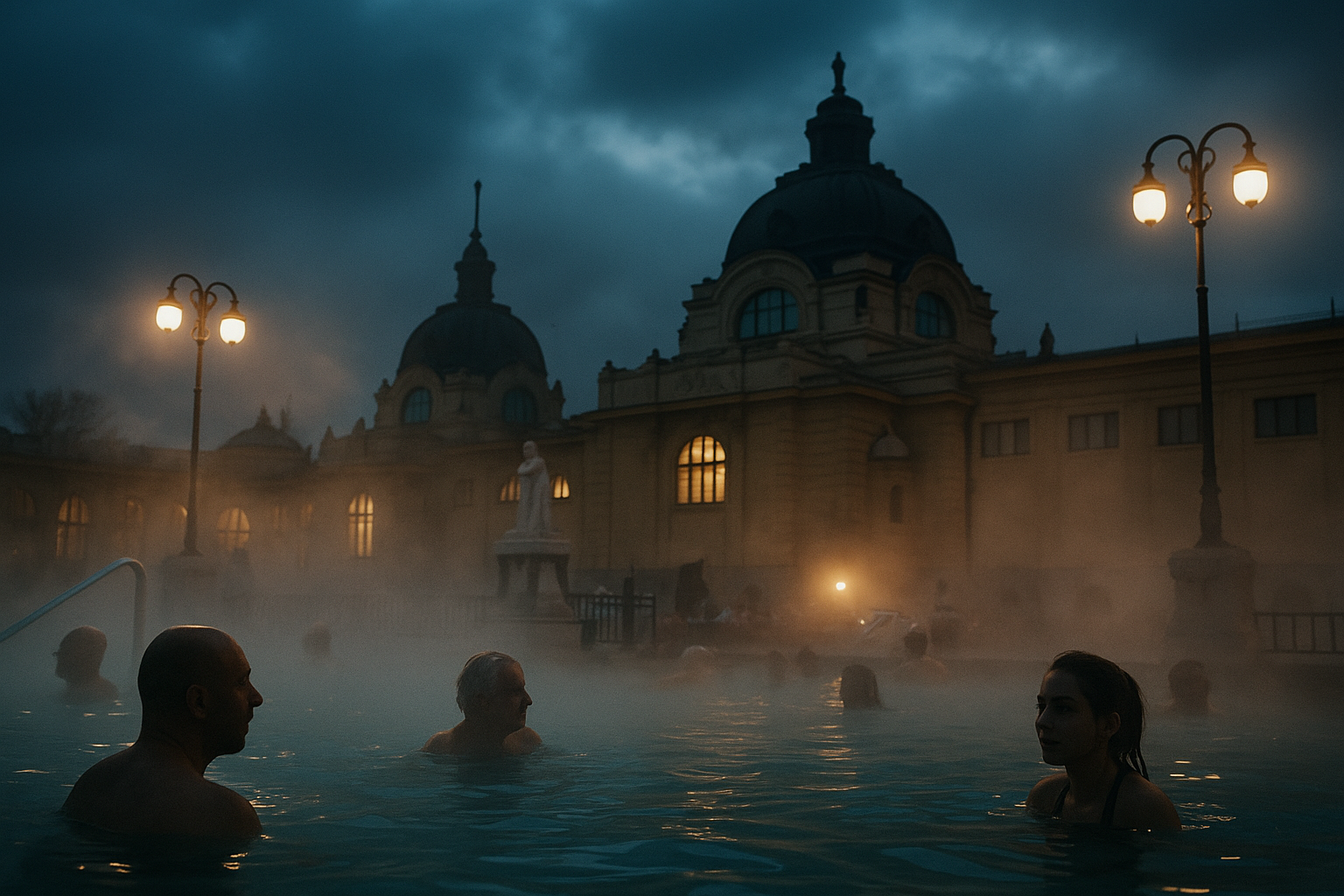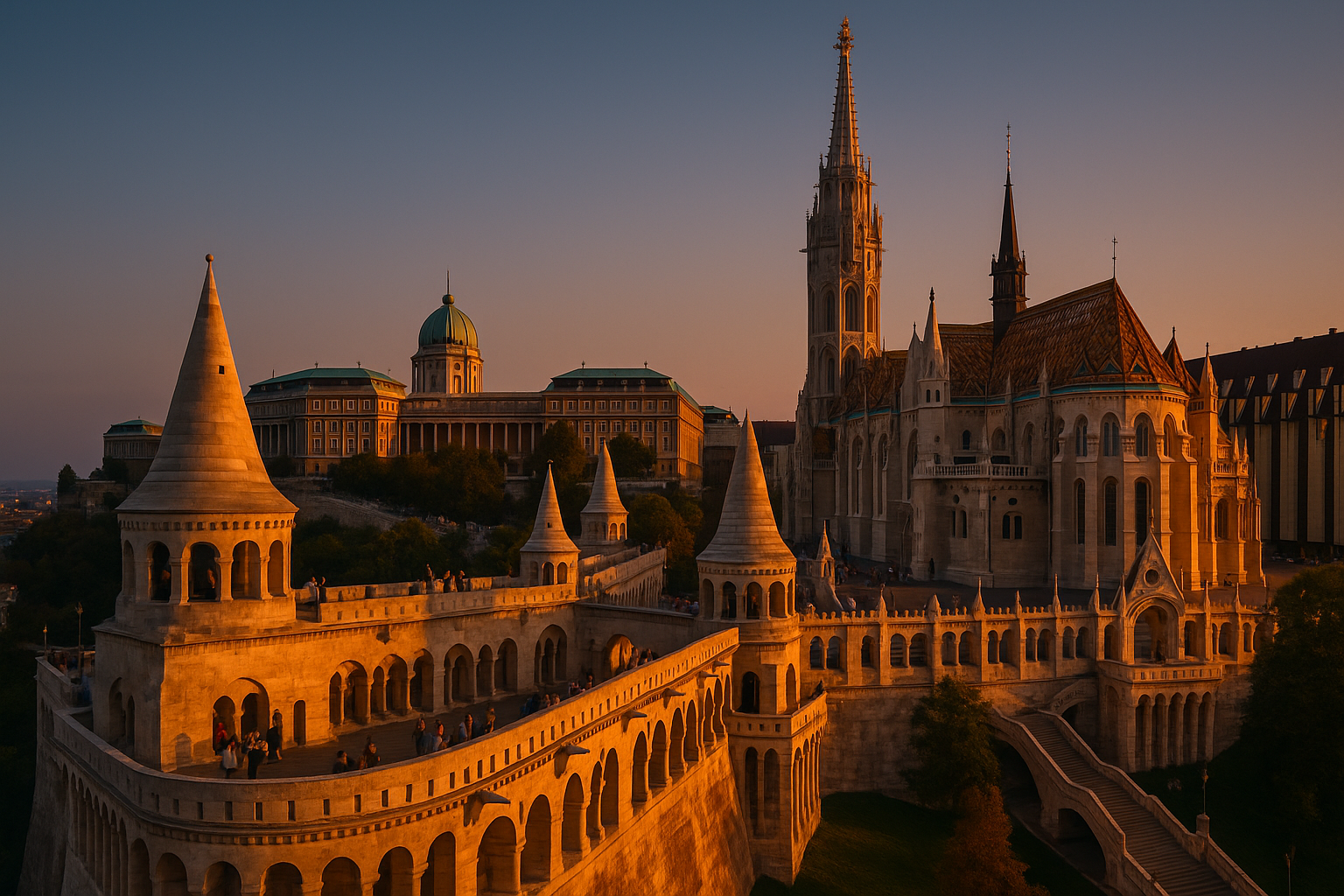
Budapest - The Heart of Europe
Budapest – the city that feels bigger inside than on the map
Budapest is not a place you just "do" in two days.
It's a city that slowly seeps under your skin: warm water under your feet, yellow trams by the river, bridges lit up at night, a skyline of church towers and chimney smoke on cold mornings.
You arrive thinking "another European capital" –
you leave feeling like you've visited three cities at once:
one above the river, one below, and one inside yourself.
Arriving in Budapest – from airport to city
Budapest doesn't welcome you with a huge futuristic airport.
Liszt Ferenc Airport is compact, a bit chaotic at busy times, but honest. You land, step out, and very quickly you have a decision to make:
Do you want your first contact with the city to be slow and local, or quick and effortless?
-
The 100E bus goes straight from the airport to the very centre (Astoria / Deák tér). It's cheap, direct, and you immediately see the outskirts, the blocks, the first old trams, the signs in Hungarian that look like a secret code.
-
Taxi or Bolt gives you a smoother landing. If you arrive late at night, in rain or in winter, it's not a bad idea. The official taxi booth in the arrival hall will give you a printed fare; Bolt is app-based and usually a bit cheaper.
The moment you cross the Danube for the first time – by bus, taxi or later by tram – Budapest starts to make sense:
Buda with the hills and castles on one side, Pest with the flat lights and long boulevards on the other.
If you can choose, time your first river crossing for after sunset. It's like a cinematic establishing shot: bridges glowing, the Parliament building lit up like a film set, the water reflecting everything.
Where to stay – choosing your version of Budapest
Budapest is one city, but at least four different moods, depending on where you sleep.
-
Buda Castle & the hills – quiet, old stones, cobbled streets, families, embassies. Morning fog, church bells, and slow cafés. If you want Budapest to feel like a historical film, stay here.
-
Inner Pest (District V – around the river, Parliament, Váci utca) – classic city centre. Great base if it's your first time, easy to reach almost everything, but more touristy.
-
Boulevard & culture zone (District VI – around Andrássy Avenue) – theatres, old palaces, cafés, a little bit of Paris, a little bit of Vienna, a little bit of Budapest only.
-
Creative & night quarter (District VII – "Jewish Quarter") – street art, ruin bars, small cafés, design shops, murals. If you want to feel the young, noisy, spontaneous Budapest, this is your place.
If you arrive for the first time, a good rule:
Stay on the Pest side for energy,
sleep on the Buda side for calm.
But there's no wrong answer – just different versions of the same city.
Moving through the city – trams, metros, and walking
Budapest is a walking city.
You will walk more than you planned – and you'll be glad you did.
-
The yellow trams along the river (especially tram 2 and 19) are like a slow, cheap sightseeing tour on rails.
-
The M1 metro line (the little yellow one) is one of the oldest in Europe – tiny stations, low ceilings, a bit of time travel.
-
Day passes for public transport are inexpensive and worth it.
You buy a 24-hour or 72-hour travel card once, and then you don't think about tickets anymore.
When the weather is good, do this at least once:
Walk from Kálvin tér or Astoria down to the river, cross one of the bridges on foot, and just let the city reveal itself.
Mornings in Budapest – coffee, light, and slow starts
Budapest is underrated as a breakfast city.
There's something special about its mornings: often a bit hazy, slow, but full of potential.
Find a café away from the main tourist streets – somewhere in a side street near Károly körút, Andrássy út or in the Jewish Quarter. Order:
-
strong coffee,
-
something with eggs or a pastry,
-
and let yourself have a proper slow start.
This is where you first feel the contrast:
the city was once imperial, then socialist, now something else entirely – and all three layers somehow sit in the same street.
The river – spine of the city
If Budapest had to keep only one thing, it would keep the Danube.
Spend time by the water:
-
Walk the Pest riverbank from Parliament down to Liberty Bridge.
Watch trams, boats, joggers, dogs, and wedding photos being taken. -
Cross Chain Bridge on foot – yes, it's touristy, but there's a reason it's on every postcard.
-
Sit on the steps by the river in the evening with something to drink and just watch the city lights come on, one by one.
If you want one simple rule for Budapest:
See it from the river,
then see it from above.
Thermal baths – warm water, old tiles, real life

There's no Budapest without thermal water.
You don't need to visit three baths, but you should visit at least one:
-
Széchenyi – iconic yellow building, outdoor pools, steam, a mix of tourists and locals playing chess in the water.
It can be crowded, but it is undeniably Budapest. -
Gellért – art nouveau tiles, pools under colourful glass, more "indoor cinematic" than outdoor party.
-
Rudas – old Ottoman core, more intimate, rooftop pool with a view of the river and bridges.
Go on a cloudy day if you can.
Warm water + cool air + a slightly grey Budapest sky = perfect atmosphere.
Streets of Pest – where the city beats faster
After the baths, Pest wakes you up again.
Walk Andrássy Avenue from the centre up towards Heroes' Square:
-
old palaces,
-
theatres,
-
embassy buildings,
-
side streets full of residential life.
Then drift into the side streets of the Jewish Quarter:
-
street art on crumbling walls,
-
small bars and wine places,
-
tiny design shops,
-
synagogues and old courtyards.
The famous ruin bars are here – you can visit one, stay an hour, see the idea, then leave before the stag parties take over. Budapest nightlife is not only about ruin bars.
Buda – hills, views and slower time
Buda is the city's day-off version.
When Pest feels too full, cross over.
-
Castle District – cobbled streets, old houses, Matthias Church, Fisherman's Bastion.
Yes, it's tourist-heavy at midday. Try early morning or late evening. -
Gellért Hill – a short, steep walk with a big reward:
all of Budapest under you, the river like a line of light. -
Further out (if you have time):
Normafa and the Buda hills – locals walking dogs, kids with sledges in winter, runners, fresh air. You almost forget you're in a capital.
This is another face of Budapest:
less curated, more natural, still cinematic in a completely different way.

Eating in Budapest – comfort, not perfectionism
Budapest won't lecture you on food.
It just wants to feed you well.
You'll find:
-
Hungarian comfort food – soups, stews, paprika, bread that feels like a meal, not an accessory.
-
New-wave bistros – lighter, modern takes on local ingredients.
-
International spots – from ramen to Middle Eastern plates, if you want something familiar.
A good rule:
Pick a place that looks like locals would actually come back to,
not one with a laminated "tourist menu" on the street.
Look inside: if you see a mix of ages, not only tourists, and no one trying to drag you in – you're probably in the right place.
Nights in Budapest – more than ruin bars
Budapest at night can be anything:
-
a quiet walk by the river,
-
a glass of wine in a small bar,
-
a concert in a ruin courtyard,
-
a jazz club in a basement,
-
or yes, a long chaotic ruin-bar evening.
For cinematic Budapest, try this:
-
Early evening walk from Parliament down the river.
-
Cross a bridge on foot.
-
Find a small bar or wine place in a side street of Pest.
-
End the night in a quieter ruin bar courtyard or at a late café.
You don't have to chase the "craziest party" to feel the city.
The best nights are often the ones where nothing big happens – you just remember the air, the lights, and the feeling of being there.
Small moments that stay with you
In the end, Budapest is not just about "seeing the sights".
It's about little things you notice between them:
-
tiles in an old stairwell,
-
a tram bell just before it moves,
-
steam rising from a bath on a cold day,
-
someone reading on a balcony,
-
a dog waiting very politely in front of a bakery.
If you let it, Budapest will give you these small private scenes – things that never appear in guidebooks, but live in your memory for years.
If you only have a short time
You don't need to do everything.
Instead, you can choose one version of Budapest for your first visit:
-
River & lights version – Parliament, river walk, evening bridge crossing, one bath, Pest nightlife taster.
-
History & hills version – Castle District, Gellért Hill, older cafés, slower dinners, Buda trams.
-
Creative & young version – Jewish Quarter streets, cafés, ruin bars, galleries, street art, markets.
Whichever you choose, leave something unseen.
That's your reason to come back.
